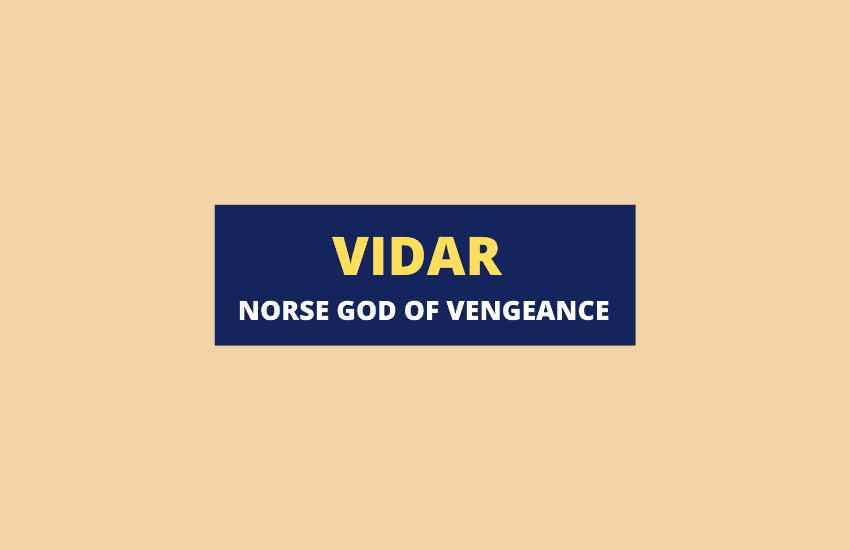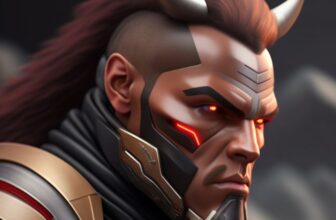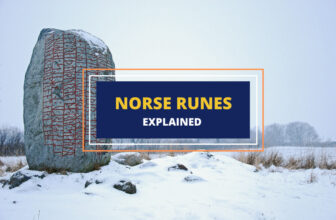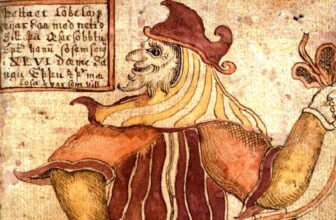
Table of Contents
Few gods in the Norse pantheon personify a simple and straight-forward action as clearly as Vidar. This Asgardian deity and son of the Allfather Odin appears to have a single purpose – to avenge his father and the other Asgardian gods during Ragnarok. While scant information of Vidar survives, he remains an elusive yet important god in Norse mythology.
Who is Vidar?
Also spelled Víðarr, Vidarr, and Vithar, and generally translated as The Wide-Ruling One, Vidar is the Norse god of vengeance. A brother to the more famous sons of Odin such as Thor and Baldur, Vidar doesn’t have as many myths and legends as his siblings. It’s also possible that there may have been more information about him but only few of his myths have survived to this day.
Vidar Before Ragnarok
Most Nordic and Germanic myths and legends take place before Ragnarok – the “end of days” event in Norse mythology. Yet, nothing is really known of Vidar before Ragnarok – he’s strangely absent from all other myths, even those that are supposed to feature all gods.
This makes Vidar a very young Norse god both within the Norse mythos and historically. Even as a “young” deity, however, there are still multiple locations in Norway that bear his name such as Virsu (Viðarshof aka Temple of Vidar) and Viskjøl (Víðarsskjálf aka Crag/Pinnacle of Vidar). There are also countless depictions of Vidar in all of Northern Europe including Britain, so his place in the Norse pantheon is undisputed despite the scant legends about him.
Vidar has been called The Silent God because of how little information we have about him.
Vidar and Fenrir During Ragnarok
The one legend that has made Vidar famous is the story of his clash with the giant wolf Fenrir.
The famous monster is actually the son of the god Loki and the giantess Angrboda. The Fenrir had spent most of its time chained in Asgard as the gods feared its power. They wanted to prevent the prophecy that Fenrir will kill Odin during Ragnarok. However, Norse mythology is based around the idea that destiny is inescapable.
After Loki, Surtur, and their army of giants storm Asgard during Ragnarok, Fenrir will break free of his chains and kill the Allfather god. Too late to save his father, Vidar will still confront the monster and fulfill his own destiny – armed with just a sword and wearing a magical boot Vidar will step on the lower jaw of Fenrir, pinning it to the ground, and will grab the monsters upper jaw with his left hand, slashing the wolf’s maw into pieces.
Vidar After Ragnarok
Anyone who knows anything about Norse mythology is aware that Ragnarok ends badly for the Asgardian gods. In fact, it’s common knowledge that none of the Asgardians survive the great battle.
Yet, that’s not exactly the case. In many Norse myths there are several gods that survive Ragnarok.
Two of them are Thor’s sons Magni and Móði, and another two are Odin’s sons Vidar and Váli. Both Vidar and Váli are gods of vengeance. Vali was birthed with the specific purpose of avenging the death of his brother Baldur, and had to grow from an infant into an adult in the span of a day to complete that task.
Even with these gods surviving the great battle, Ragnarok was still viewed as a loss for the Asgardian gods and as the end of the universal cycle. So, while their survival isn’t a “victory”, it is emblematic of how the Norse viewed vengeance – the only thing that remains after a devastating conflict.
Importance of Vidar in Modern Culture
Unfortunately, Vidar isn’t really represented in modern culture, especially when compared to his most famous brother Thor. Even though Vidar was said to be the second strongest god in Asgard after Thor – the literal god of strength – most of Vidar’s appearances remain in the archeological record. The one notable exception is Michael Jan Friedman’s Vidar trilogy from the mid-80s – The Hammer and the Horn, The Seekers and the Sword, and The Fortress and the Fire.
Wrapping Up
Vidar is an important deity in Norse mythology and possibly one of the few gods who would go on to rebuild the new world after Ragnarok. However, because such little information about him exists, it’s difficult to get a holistic picture of who Vidar was exactly and how the Norse viewed him.








